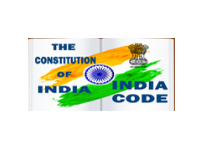Executive Summary
1. The Department of Personnel & Training (DoPT) constituted a group, in December 2002, under the Chairmanship of Lt. Gen. (Retd.) Surinder Nath, former Chairman of the UPSC, to review and make recommendations with regard to the present systems of performance appraisal, promotions and lateral movement in respect of the All India Services and other Group A services. The terms of reference of the Group were as follows:
- To comprehensively review the present system of recording Annual Confidential Reports so as to bring greater transparency and efficiency in order to motivate good officers.
- To develop a system of recording of ACRs so that better performance or lack of performance gets properly and fairly reflected. There is need to bring about a culture where a superior officer does not hesitate in recording the weakness in an officer merely due to the possible ‘risk’ of having to convey adverse remarks and subsequently respond to the representation received against adverse entries.
- To evolve a new system for performance appraisal after looking at practices being followed elsewhere, particularly in the Defense Services, some of the leading corporate houses, some multi-lateral organizations as well as the civil services of some other countries.
- To make recommendations/suggestions for a performance appraisal system for the All India Services and subsequently, for the Group ‘A’ Central Services.
- To review the present system of promotion of All India Services and other Group ‘A’ officers, at the level of Joint Secretary, Additional Secretary and Secretary to Govt. of India (and their equivalents), to ensure greater transparency, objectivity, and a more clearly defined linkage with the performance appraisal system.
- To make recommendations for establishing a more clearly defined linkage between the performance appraisal system and the background and experience of officers at these levels, and their lateral movement, in respect of All India Service, and other Group ‘A’ Services.
2. Given the short time available, the Group focused attention on the All India Services. While the recommendations of the Group would broadly apply to all the other Group ‘A’ services, a separate detailed exercise would be necessary to factor in the individual service characteristics.
3. The recommendations of the Group are in two parts, the first relating to the system of performance appraisal and the second to promotions and placement (including empanelment and posting) in the Central Government, under the Central Staffing Scheme.
Performance Appraisal System
Objectives
4. Given the rapidly evolving challenges of public management, the present objectives of performance appraisal need to be widened and deepened to respond to the emerging needs of governance. In this context, performance appraisal cannot serve only as a tool to assess suitability for vertical movement, but should be primarily used for the overall development of an officer, and for his placement in an area where his abilities and potential can be used to best advantage. There is, thus, a need for a paradigm shift in the philosophy of appraisal and the objectives should be the following:
- To make an assessment of the officer’s professional capabilities, with a view to determining capacity building needs and suitability for particular areas of responsibility/assignments. (Training and Placement Function)
- To counsel the officer on directions for improving performance, professional capabilities, and conduct with peers, juniors, elected representatives, and the general public (Feedback and Counseling function)
- To be a tool for developing a work plan for the year (Planning of work function)
- To make an objective assessment of the officer’s performance in the current assignment, including performance in training, study courses and deputation outside the government, based on monitorable inputs, relative to his/her peers, with a view to determining suitability for higher responsibilities and special assignments. (Promotion Function)
- To identify genuinely exceptional work accomplished, including innovations, with a view to giving due recognition (Recognition function)
- To enable officers to identify systemic shortcomings in the organization with a view to improving governance standards (Strengthening Governance Function)
(see para 4.17)
5. At the beginning of each year, each appraisee and his reporting officer would prepare a work plan for the coming year, setting forth the key tasks to be accomplished in order of priority, the specific deliverables for each task (in quantitative/financial or qualitative terms) and the key assumptions made in arriving at the plan. This work plan would be updated at mid year, to take account of changed circumstances, if any. The initial and mid-year work plans would be filed with the review officer.
(see para 4.12.10)
Better monitoring and scrutiny through computerization
6. A delay in recording appraisal reports is a major weakness in the current system. In order to have such an effective system of monitoring, it is, first of all, important to assign overall responsibility for monitoring and maintenance of the performance appraisal dossiers to one agency. It is recommended that the monitoring function be assigned to the respective cadre controlling authority. In respect of the All India Services this may be assigned to the cadre controlling authority in the Central Government, who, in turn, would work through the cadre controlling departments in the State Governments.
7 The agency assigned the responsibility of monitoring the timely writing of annual performance reports should then put in place a computerized system for more effective monitoring. Computerization would be useful for the following purposes:
- Monitoring the timely writing of the appraisal report by the appropriate Reporting and Reviewing Officers.
- Facilitating the development of a master data sheet (MDS), which could be used by any promotion/screening committees, for various personnel actions.
- Providing assistance to promotion/empanelment committees in accounting for systematic variations in grading standards across different State cadres of the same service, and identifying inconsistencies between overall grades and grades for individual attributes.
- Aggregating numerical scores on the basis of frequency distribution or fuzzy set analysis.
- Drawing panels/shortlist of officers for specific assignment/training programs.
- Maintaining an effective database of officers, that can be tapped for various purposes.
(see para 5.2)
Staggering cut off dates
8. Another useful method of ensuring that the PARs are written in time is to require higher levels to certify that they have initiated the reports in respect of their subordinates, while submitting their own self-appraisals. To facilitate this, staggering cut off dates for report writing at different levels should be introduced. While the period of report may remain the same, i.e., 1st April to 31st March, the cut-off dates by which the different stages of the performance appraisal system should be completed could be staggered. The Group has suggested a calendar of the cut-off dates.
(see para 5.3)
Need for greater openness
9. Three issues are salient in this context: (i) to disclose or not to disclose (any part of) the PAR, and if disclosure is preferred; (ii) to disclose “everything but the overall grade” or “everything including the overall grade”; and (iii) stage at which disclosure should be made.
10. The Group, after weighing the pros and cons of the various options, favours disclosure of the entire PAR, including the overall grade. The disclosure should only be after review by the Reviewing Officer.
11. The appraisee may be given the option to give his comments on the PAR, which may, however, be restricted to the specific factual observations made by the Reporting and Reviewing Officers. In case the appraisee submits any comments, it would be open to the reporting and reviewing officers to accept the comments of the appraisee and modify the PAR accordingly. In case they do not accept the representation of the appraisee, the same, along with the entire report (and the comments by the Reporting and Reviewing Officers, if any), may be placed before a designated “Referral Board” who would consider the matter and make any changes, as considered necessary in any part of the PAR, including the overall grading.
(see para 5.5)
Numerical Grading
12. A system of numerical grading may be introduced for evaluating the work output, the personal attributes, the functional competencies and the overall assessment. These may be done on a 1-10 scale, with 1 referring to the poorest grade and 10 to the highest.
(see para 5.7)
State of Health
13. In order to ensure that health/physical fitness aspects are given due consideration in making placements, it is necessary that information on the state of health should be provided by a formal medical examination, (rather than non-professional impressions by the Reporting Officer). Accordingly, a comprehensive health check up, at least once in two years, should be insisted upon. A summary of the medical report, should be placed in the PAR dossier.
(see para 5.10)
“360 degree” reporting
14. As yet there is no established modality for evaluation of an officer’s performance and qualities by peers, subordinates and clients (termed 360 degree assessments). The group considered that it would be useful to supplement the formal PAR regime with an institutionalized means of ascertaining the reputations of civil servants, consistent with our culture and ethos. Accordingly, each cadre controlling authority may, at its discretion, set up a “Eminent Persons Group” (EPG) whose names would be kept strictly confidential), i.e. persons of acknowledged character and wisdom who clearly do not (no longer) have any personal stakes in the civil service career of anyone in particular. The EPG may, through appropriate means (e.g. discreet personal enquiries or more structured surveys) ascertain from a range of peers, juniors, and clients (e.g. public representatives, media persons, NGO functionaries, business persons, etc.), the reputation (in respect of financial and moral integrity), professional competence, attitudes, and personal qualities of each civil servant of the concerned cadre once every five years, starting from the 10th year of service. It would set out their findings in a confidential report to the concerned cadre controlling authority. This information may be compiled separately from the PAR dossier, and may be useful in the following contexts, besides others:
(i) Placements to sensitive or special appointments.
(ii) Counseling officers at 20 years of service or 50 years, whichever is earlier, regarding the advisability of their accepting VRS.
(iii) Confidential counseling of officers regarding their attitudes or conduct (e.g. with respect to juniors or public representatives), or activities that have a bearing on moral or financial integrity, so that they may remedy themselves.
(see para 5.12)
Personal Dossier
15. The cadre controlling authority should maintain a comprehensive personal dossier on each officer, which should comprise of the following documents:
- A Curriculum Vitae of the officer, to be updated by means of the annual PAR and a five yearly CV update submitted by the appraisee.
- The set of PARs earned in service throughout one’s career.
- The set of PARs (or similar appraisal) earned by the officer on deputation on foreign service to organizations outside the Indian governmental system.
- The set of records of performance from the concerned institution during training and academic courses attended, including while on Study Leave.
- Reports of biennial medical check ups
16. The Curriculum Vitae may comprise of the following sections:
- Section I: Personal Data
- Section II: Academic and Professional Qualifications
- Section III: Professional Publications Record:
- Section IV: Work Experience (Job content of position held):
- Section V: Exceptional work accomplished/ Recognitions earned and reprimands/ strictures/ penalties received
(see paras 6.3,6.4 & 6.5)
Structure of the PAR:
17. Only 2 sets of proforma may be used for the All-India Services. One proforma would apply for all levels equivalent to that of the Chief Secretary (in the case of IAS)/ Director General of Police (in the case of IPS)/ Principal CCF (in the case of IFoS). For the remaining levels there would be a second proforma. The recommended proformae are included in the report.
18. The base format, applicable to the levels that fall below the top levels would comprise of the following four sections:
| For The Level | Details |
|---|---|
| Section I | Basic information |
| Section II | Self appraisal |
| Section III | Appraisal |
| Section IV | Review |
Section II would require the appraisee to indicate his achievements against the pre-set work plan as well as achievements against unforeseen tasks during the year. He would be required to identify and comment on any one significant contribution made by him in some detail. He would also be required to indicate his training and skill upgradation needs.
Section III would require an assessment of his work output as well as a series of personal attributes and functional competencies. It would also require a descriptive pen-picture to be recorded to highlight any other features that are not reflected in the rest of the appraisal. Finally a numerical overall grade is to be given.
Section IV would require a review on more or less similar lines, i.e. assessment of the work output/personal attributes/functional competencies as well as recording of a pen-picture and an overall grade.
19. Due to shortage of time the Group has not been able to design suitable proforma for the other Group ‘A’ Services. However, it is suggested that individual cadre controlling authorities may adopt the proforma suggested for the All India Services, with some minor modifications as may be required to reflect service specific requirements.
(see para 6.6)
Calendar
20. The suggested schedule of cut-off dates (deadlines) for various activities in the performance appraisal system has been given in the main body of the report in Chapter VI.
(see para 6.7)
Promotions, Empanelment & Placements
21. At junior levels, when officers are in the formative years of their service careers, they should be guided, counseled and trained so as to help them realize their full potential. Promotions should be assured to them, subject to generally satisfactory performance , and may be on a time-scale basis. However, as the officer grows in service and is to be considered for positions dealing with policy and program formulation and implementation, there should be deep selection and only those who can demonstrate a creditable record of actual performance, and possess the necessary knowledge and skills required for higher responsibilities , should be promoted. Promotion norms should be stringent and the process of promotions based on merit and competition rather than on simple attainment of a-priori benchmarks.
22. Another consideration in redesigning the promotions system is that officers must be evaluated not only on their performance in the feeder (lower) positions, but also in respect of their level of preparation by way of acquiring the necessary skills and knowledge for the higher level positions.
23. The Group addressed the following issues:
1. The composition of the Screening Committee – it should be in a position to resist pressures to promote certain favoured candidates who otherwise lack merit.
2. Models for the promotion process.
Composition of the Screening Committee in States
24. With a view to enhancing the credibility and impartiality of the Screening Committee, involvement of a senior officer from outside the State cadre is recommended. The composition of the Screening Committee may, therefore, be the following:
| For the level of | Current composition | Recommended composition |
|---|---|---|
| Super Time Scale |
|
|
| Principal Secretary Grade |
|
|
| Chief Secretary |
|
|
Similar changes may be made in respect of promotions in the IPS and IFoS.
(see para 9.8)
Models for promotion
25. Two models may be considered for the process of promotions to the super-time scale and above. Both models are based on the principle of merit cum seniority, with the zone of consideration taken as (1.5 n + 2) officers, rounded off to the next higher integer (n = number of anticipated vacancies). The difference between the two models lies in the assessment parameters and basis for evaluation, as explained below:
Model A
In this model the criteria and process for selection for the higher positions may be the following:
- Satisfactory completion of all the required training programs (including approved substitutes) for the higher positions
- Evaluation of performance appraisal reports of the last 10 years, which should be moderated to ensure consistency between
- The overall grading secured
- The assessment against work performance
- The assessment against different attributes
- The pen picture of the officer
- The evaluation of the PARs should yield a single score on a 10 point scale (the higher the better) for each candidate officer. This may be the mode or preferably the median, but not the average, of the moderated scores, as evaluated above.
- Officers may be identified for selection, starting with the officers attaining the highest score, and moving down, until the number of anticipated vacancies is (just) reached.
- The merit list of officers may then be arranged in their order of inter-se seniority for promotions in turn against vacancies.
The cases of such officers who are not included in the merit list in a given year may be reconsidered after a period of two years, i.e. after two more annual PARs have been added to their dossiers, and they have qualified in the required career courses (if not done earlier). The case of each officer may be considered three times in all (once as a fresh case and twice under reconsideration). After three unsuccessful attempts, the officer need not be considered for promotion any further. (For promotions to the grade of Chief Secretary in the States cases would be reconsidered in each subsequent year, i.e. after one year’s PAR has been added to their dossier.
(para 9.9.3)
Model – B
In this model, a greater emphasis is placed on acquisition of necessary skills and experience for the higher positions than in the case of Model A.
The following evaluation criteria, with corresponding weight for each, may be adopted:
- An evaluation of the officer from his performance appraisal reports (including performance in positions outside the Indian Governmental system) for the last 10 years - weight of 50%
- “Richness of work experience”, as determined from his entire service record - weight of 20%
- Evaluation of significant achievements or failures (“critical events”) in his entire service period - weight of 5%
- Acquisition of formal professional skills for the higher positions - weight of 25%
The evaluation from the performance appraisal reports would primarily be an assessment made from his overall grades and the ratings against the work output, different attributes, remarks from the pen picture, etc. as for Model A. The richness of work experience would be an assessment of the job content of his previous assignments that would contribute towards his ability to perform in the higher position by way of experience based skills and knowledge. This would involve the substance of job content (i.e. discounting for purely staff jobs, enhanced weightage to substantive field or secretariat positions), sufficient but not excessive diversity of job content (i.e. avoidance of long-periods spent in a single sector or type of position, or insufficient time spent in a large number of different sectors), as well as sufficient focus on particular sectors (e.g. education, tribal welfare, public finance [IAS]), or roles (e.g. crime detection, intelligence, security [IPS]; silviculture, wildlife management [IFoS]). The significant achievements or failures (“critical events”) would primarily relate to out-of-the-ordinary positive or negative achievements, which may also have been recognized through rewards or penalties from the relevant authorities or agencies. The assessment of skills for the higher assignments would be based on his successful efforts at improving his relevant formal professional qualifications, including career training other relevant study/training programs, including those pursued during study leave, and his portfolio of published research, all of which would be reflected in his CV. Actual performance in these efforts and not simply the fact of successful completion, would be taken into account. The weights proposed for the different criteria of evaluating merit reflect equal consideration to performance in the lower grade and extent of preparation for higher level responsibilities. 75% of the total weight arises from information available in the PARs.
As in case of Model A, officers who are not selected in the first attempt, may be re-considered upto twice more, provided that they have earned at least two year’s PARs in the interim for super-time and Principal Secretary scales, and at least one year’s PAR for higher levels and/or enhanced their relevant formal qualifications.
(see paras 9.9.4, 9.9.5 & 9.9.6)
26.
The models that may be adopted at the different functional levels in respect of the different All India Services may be as follows:
| Functional level. | IAS | IPS | IFoS | Model |
|---|---|---|---|---|
| Super-time scale | Commissioner | Inspector General of Police | Chief Conservator of Forests | A |
| Principal Secretary Grade | Principal Secretary | Additional Director General of Police | Additional Principal Chief Conservator of Forest | B |
| Chief Secretary Grade | Chief Secretary | Director General of Police | Principal Chief Conservator of Forest | B |
27. The proposed system cannot be introduced immediately, as time would have to be given for officers to take necessary action to upgrade their skills and for the requisite training programs to be put in place. Hence, in all cases where Model A is to be adopted for promotions, a period of three years may be allowed before the new system is implemented. Where, Model B is to be used, a phased process of implementation may be introduced so that officers may have reasonable time to prepare for the new system. A graduated weightage for different aspects, during this transition period, has been recommended.
(see para 9.10)
Screening deadwood
28. There is no benefit in retaining in service officers who lack demonstrated competence, or who are unqualified, or of doubtful moral or financial integrity or who are in unacceptably poor health. It is accordingly, important that an effective system of screening such officers be put in place. Provisions already exist for the compulsory retirement of those who have completed 50 years of age or 30 years of service[3]. However, this provision has not been adequately utilized so far.
29. In order to implement the system, a Standing Committee may be set up under the Cabinet Secretary, which should, by a given date each year, review the records of all officers who have reached the age of 50 years, or have completed 20 (twenty) years of service. These records would comprise the Performance Appraisal Reports, report of performance in specified career courses, results of vigilance enquiries, in personam court proceedings, and disciplinary proceedings faced by the officer in his/her career. It would also include a statement of pending proceedings in each of these categories.
30. The following norms may be adopted for identifying the officers to be screened out:
- An officer who has failed to make the select list for promotion to the next higher grade 3 times.
- An officer who has encountered 3 proceedings resulting from vigilance enquiries (i.e. major disciplinary proceeding, or criminal proceeding in court) in respect of alleged lapses of moral or financial integrity in the course of his/her career, even if the officer is cleared on completion of the proceedings in each of these, may be screened out as lack of moral or financial integrity would be considered as “highly probable” in his case.
- An officer who has failed 3 times to qualify in the requisite career course(s) for his next promotion.
- An officer who is permanently medically unfit to perform the normal duties of the service, as revealed from the biennial medical examination
31. Officers screened out should be informed of the fact and advised that they may, if they wish, avail of a voluntary separation package (as already available to surplus staff). If they choose to remain in service, their cadre controlling authorities would be advised of the findings of the Standing Committee, so that the same may be appropriately taken into account in planning future postings of the officer.
32. A second review may be carried out after a further period of five years, i.e. after the officer has completed 25 years of service or 55 years of age. If the performance of the officer does not show any marked improvement and the chances of further career advancement continue to be dim, the available provisions for compulsory retirement should be invoked.
(see para 9.11)
Career Courses
33. The job profile of an AIS officer undergoes significant change as the officer moves from program implementation levels in the first few years of his career to program formulation and policy making levels in subsequent years. It is, therefore, essential that all services must specify career training programs, which would equip an officer with the necessary skills for positions likely to be held in the next 9-10 years. Accordingly compulsory training programs at suitably timed in-service levels would be necessary so that the performance in these programs could be taken into account for the next promotion.
34. These career-training programs would need to be more rigorous and of greater duration than the one/two week programs currently being offered to IAS officers. Performance in these programs must be evaluated in terms of the norms followed for professional training programs.
(see para 9.12)
Empanelment and Placements in the Government of India
Domain Assignment
35. Assigning particular domains to officers is a key step in accomplishing this objective. The following 11 domains may be adopted for assignment to officers for selection to Central Staffing Scheme posts:
- Agriculture and rural development
- Social sectors (Education, Health, Tribal Welfare, etc.)
- Culture and Information
- Natural Resource Management including Environment (green side).
- Energy and Environment (brown side)
- Communication systems and Connectivity Infrastructure
- Public Finance and Financial management
- Industry and Trade
- Domestic Affairs and Defense
- Housing and Urban Affairs
- Personnel and General Administration, Governance Reform and Regulatory systems
Officers may be assigned to a maximum of three domains out of the eleven given above.
(see para 10.2)
The assignment of Domains may be part of the empanelment process at JS/AS levels, which would identify officers for posting to the GoI at levels of JS and above. Officers empaneled as Secretaries to GoI may carry their Domain assignments at the AS level empanelment, unless there is a significant change in their qualifications or work experience at the AS level. Officers due for consideration for empanelment may submit a write-up (not more than 1000 words), summarizing their experience, academic background, training courses undergone, research accomplishments, recognitions relevant to the Domain areas, and significant achievements during their career relevant to these areas. These write-ups may be scrutinized by the Empanelment Committee which may be assisted by several eminent academics/experts in the respective fields for evaluation of work experience, academic and training courses undergone, research accomplished, etc. The Committee would evaluate the claims of the officers to specific Domains, which may be accepted or denied.
(see para 10.3)
Empanelment
37. Since empanelment is a select list of those who have already been promoted in their respective cadres, for manning positions of great responsibility, the criteria for empanelment have to be more stringent than that for promotion. Accordingly, the following recommendations are made:
- The output of the empanelment process would be a list of officers found suitable for selection to specific positions under the Central Staffing Scheme, together with their respective Domain assignments. All empanelled officers must be informed of the fact of their empanelment, including Domain assignment.
- Individual batches may be taken up sequentially along with those from previous batches who are due for review. Thus, there would be a fresh batch to be considered each year and some review batches. Cases of such officers who are not empanelled when their batch is taken up for consideration on the first occasion, may be reviewed up to twice more. Before each review, for the Joint Secretary’s level, an officer should have earned two more annual PARs and for higher levels one more annual PAR. .
- A norm of empanelling not more than 50% of the officers of the fresh batch, for the Joint Secretary level, should be adopted. All the non-empanelled officers of the review batches, who secure higher overall scores in the evaluation, compared to the last empanelled officer of the fresh batch, may also be empanelled. Thus, the percentage of empanelment within a batch may go over 50% after the review stage. The percentage of officers of the fresh batch empanelled at higher levels would be lower, and would need to be worked out on the basis of the likely vacancies as well as a cushion to allow meaningful selection for particular positions depending upon skills and background.
- In awarding scores to each officer for empanelment at all levels, the formulation suggested in Model B for promotions may be adopted, with the same transition provisions, except that the zone of consideration would not be (1.5 n + 2), but the entire batch and review cases from previous batches.
- The UPSC should be involved in the empanelment process and should include an interview. The interview would validate the claims of skills for the higher position, and would not be a personality test.
- The empanelment committee should be chaired by the Chairman/ member of the UPSC and should include atleast two eminent professionals and other suitable senior officers as may be agreed between the Cabinet Secretary and Chairman of the UPSC.
- The exercise of domain assignment should be done first and then followed by evaluating suitability for higher positions (both being components of the empanelment process). The domain assignment when the officer was first considered for empanelment may hold at the review stage also, unless the officer has made a specific request for reassignment of the domain.
- The approval of ACC should be obtained for the entire output of the empanelment process, i.e., suitability for the higher positions and Domain assignment.
(see para 10.4)
Placement
38. For selection to particular positions under the Central Staffing Scheme, at the level of Joint Secretary and above, the following procedure may be adopted:
- Step 1: Notification of vacancies likely to arise in the course of the forthcoming year
- Step 2: Identifying the relevant Domain Competency and job requirements for each post
- Step 3: Publication of the list of vacancies and invitation of interest from prospective candidate officers of up to 3 specific positions
- Step 4: Generation of long-lists for each position, on the basis of interests expressed and the assigned domains
- Step 5: Generation of Short-Lists by the CSB by matching the requirements of the position with the specific backgrounds and experience of the officer
- Step 6: Final Selection for the post by the ACC
(see para 10.6)
[1] Necessary adjustments may be made by the Screening Committee where the PARs are not in a consistent format, for example, the transition years during which ACRs (old format) and PARs (new format) are to e evaluated, or alternatively, the PARs relate to agencies outside the Indian governmental system. Adjustments may also be necessary where systematic biases in evaluations are noticed between different State cadres, or where a single Reporting/Reviewing officer has furnished the PAR of a particular officer an unusually large number of tijmes.
[2] Generally, but not invariably, these would be available in the PARs. Some exceptional achievements may not relate strictly to one’s official work, for example outstanding and nationally/internationally recognized literary and scientific work.
[3] As provided under FR 56(j) and Rule 16(3) of All India Services (Death-cum-Retirement Benefits) Rules, 1958






 कार्मिक एवं प्रशिक्षण विभागDepartment of
कार्मिक एवं प्रशिक्षण विभागDepartment of 













